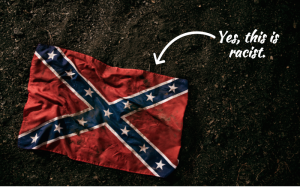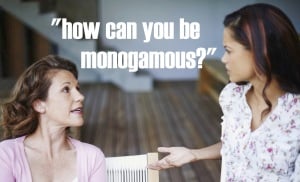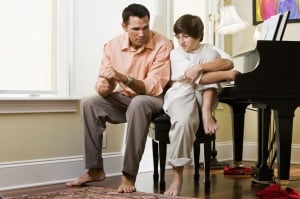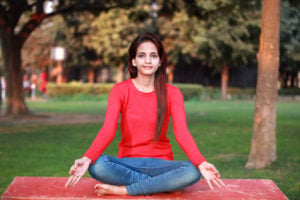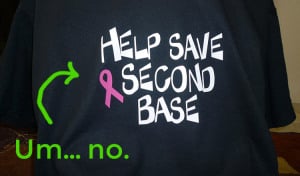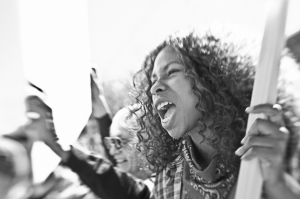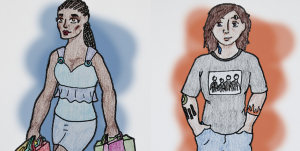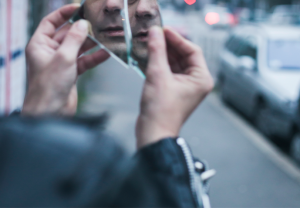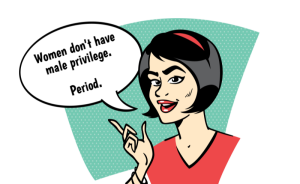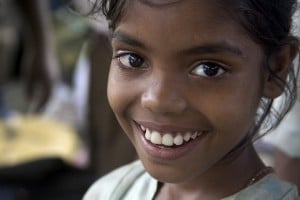
Source: Wikimedia
On the outside, India might be a country of homogeneously brown people, but on the inside, people fall within a broad color range – from dark brown to almost white.
Unfortunately, this diversity in skin color has created a hierarchy of beauty – a hierarchy that tells you that the light-skinned people are the epitome of beauty, while the dark-skinned people fall at the bottom.
I was unaware of this until I was in the sixth grade when I found out that my dark skin could put me in a tough spot and stunt my self-esteem.
My light-skinned classmates ridiculed the color of my skin. One of them called me “black paint.” I pretended I didn’t hear him and walked away.
In the ninth grade, when I was at a friend’s house along with some other friends, one of them refused to drink coffee when offered and instead pointed at me and said, “I don’t want to drink coffee because I don’t want to look like her.”
I didn’t understand what it meant until another friend replied to him, “You don’t get dark by drinking coffee.”
And then as the conversation went back to coffee and the odd logic of 14-year-olds, I sat there quiet and embarrassed among my group of friends, wishing I were invisible or just some place else.
I hated going out in the sun. I hated going out at all.
I remember once my mother had asked me to get milk from the near-by milk booth, and while I was walking back home from there, I noticed two young men looking at me. One of them whistled and the other blurted “But she’s not pretty!”
At 15 years of age, a stranger calling me “not pretty” aloud was as new and shocking to me as being sexually harassed on the street for the first time.
I hated wearing white and black. I hated taking pictures in a room that wasn’t well-lit because I knew that while the faces of all my fair-skinned friends would show up in the picture, mine wouldn’t. And the idea of being embarrassed in front of your friends was life-threatening.
I was not just a dark-skinned child in the classroom, but an “other” since I belonged to the southern state of Tamil Nadu and not to the northern cities that I had lived in through the years.
To my North Indian classmates and acquaintances, a “stereotypical” Tamilian was something like this: a dark-skinned, Tamil-speaking person who eats only idlis and dosas, and who speaks English and Hindi with a heavy Tamil accent.
Luckily, I didn’t have a Tamil accent while speaking Hindi or English, so I was spared from any ridicule in that department.
Growing up in three cities where Hindi was spoken, I got used to Hindi. In a way, it became my first language, the language I am most comfortable in. English followed. But Tamil was nowhere in sight.
My skin color, the stereotyped Tamil culture, and people making fun of Tamil accents, pulled me away from anything Tamil. So much so that I could understand what my parents said to me in Tamil, but I couldn’t reply to them in the same language.
I didn’t know how to speak Tamil, and I didn’t want to. I didn’t want to celebrate any Tamil festival, or watch Tamil movies, or listen to Tamil songs. To feel good about myself, sometimes I looked down upon my parents when they expressed their Tamil identity.
During most of my teenage years, I put on a mask, trying to hide where I came from.
I told people I didn’t know anything about the culture I belonged to so that they could think I was just like them. At every chance I could, I tried withdrawing my affiliation with my culture.
Because I was brought up in places where I experienced the culture of my friends more than that of my parents, I felt the culture I saw around me was somehow cooler and better than the one I belonged to.
I now know that it wasn’t cooler or any better, but just different. I didn’t know it then.
Back then, I just wanted to be light-skinned so that I could be beautiful because the message was that anything that was not fair was plain ugly.
Yet at the same time, I wanted to be just as I was because I liked who I was, and also because I felt that the people making fun of dark-skinned people were doing something insensitive and hurtful, that they were wrong. And I didn’t want to change for the wrong people.
Back then, TV advertisements for fairness creams were about the dark-skinned girl failing to get the guy, get the job, and get the life of her dreams. The idea was to make you buy into that threatening future of never amounting to anything with the color that coats you, and then make you buy the magic cream that could give your life the right amount of pinkish/whitish glow it needs.
If anything has changed in the fairness cream industry since then, it is that today the advertisements are less about making you feel bad about what color you’re born in and more about fair-skinned girls aiming for empowerment and gender equality at the same time being a visual delight to onlookers.
As a teenager, I used to think, “When I get married, and when I watch TV with my husband, how humiliating would it be when there pops up an advertisement for fairness creams during a commercial break?” I dreaded that thought, that possibility of being humiliated in front of my husband by an advertisement.
If there was one good thing that TV brought into my drawing room during my growing up years, it was the Oprah Winfrey Show.
I watched the show every afternoon after I came back from school, and apart from the obvious things that one would learn by watching the show, I learned that if I had the right amount of confidence and personality, I could pull off a neon-colored top just like Oprah Winfrey.
If I had the right amount of self-esteem and power within me, then I no longer needed to avoid buying clothes in colors such as white, yellow, orange and black – the colors that people said would look too bright on me or too dull or too ugly. I realized that it was possible for me to wear whatever colors I liked.
I began working on my self-esteem. I cleared the space within me where once I had locked up pain. I kept writing about my dreams in my journal. I shut out the voices of the world and listened to Oprah and to myself, and finally I heard what I always knew – I am beautiful.
I taught myself confidence. I learned that not being ashamed is the first step towards complete confidence about one’s self, one’s bones and flesh.
So I became open about my feelings instead of keeping them inside. I told my friends when something hurt. I embraced having a voice.
In the last two years at school, I started doing things that I never did before, for fear of not being good-looking enough to be doing things. I started participating in school activities. I recited the school prayer and the pledge and read the news on the stage during the morning assembly. I started letting people see me.
I understood that where I come from is nothing to be ashamed of. It is part of who I am in the physical form. And to deny that part is to deny who I am, to deny my very existence.
I understood that being ashamed of how you look or where you belong to is being ashamed of your genes, being ashamed of your parents and their childhoods, their struggles and their existence. It took years of practicing self-esteem before my attitude towards my identity changed completely.
Today at 24 years of age, I am not ashamed. I don’t fear being seen.
Today I can reject a saleswoman’s attempts to sell me a new fairness product that promises to remove the “dark spots” (that’s what they call my skin color sometimes), or answer people where I come from without being ashamed.
I still struggle with confidence sometimes, but it’s the kind of struggle that has nothing to do with my background, or looks, or skin color. I don’t feel inferior to fair girls anymore. I am not conscious of my looks while talking to boys. I am no longer bitter towards those who hurt me in the past or those who robbed me of a healthy self-esteem during my teen years.
Today I am at peace with all that.
Surprisingly, my low self-esteem never hampered my dream of finding true love. Somehow I always believed there was a guy who was above the petty concepts of the world, a guy to whom I would not be an exception to the hollow definition of beauty, but to whom I will be an authentic part of beauty in its truest essence. Luckily, I did come across a guy like that once.
This color consciousness among Indians and the resultant ragging doesn’t attract much attention in India since it doesn’t qualify as racism. Also, Indian laws provide equal rights to everyone irrespective of race, color, caste, creed and sex. So, color consciousness is not part of the system or the institution.
It’s acceptable to make a dark-skinned person feel bad about his or her skin color because being light-skinned is what is preferred and damages to self-esteem don’t count.
India has not changed since I have grown up. It is still color-conscious. Its fairness cream industry is still booming. Strangers still sometimes poke fun or act plain nasty.
But now I know which comments to react to and which ones to tune out, for nothing can now change the way I see myself and the way I define beauty.
I now know that fair and dark are not two sides of a coin called beauty. Neither of them are standards of beauty because beauty in its essence has no standards.
The only thing ugly in the world are thoughts and actions that rob us or others of love, peace, and joy. Everything else is beautiful.
[do_widget id=”text-101″]
Want to discuss this further? Visit our online forum and start a post!
R. Nithya lives in New Delhi, India. She has a Bachelor’s in Journalism and a Master’s in Political Science and has worked as a reporter with an online political news and analysis magazine. She enjoys reading books while traveling on the metro, writing poetry on sleepless nights, and engaging in conversations on politics, feminism, and spirituality. These days she is practicing patience and presence. Visit her here or follow her on Twitter @rnithya26.
Search our 3000+ articles!
Read our articles about:
Our online racial justice training
Used by hundreds of universities, non-profits, and businesses.
Click to learn more
Most Read Articles
- « Previous
- 1
- …
- 30
- 31
- 32








